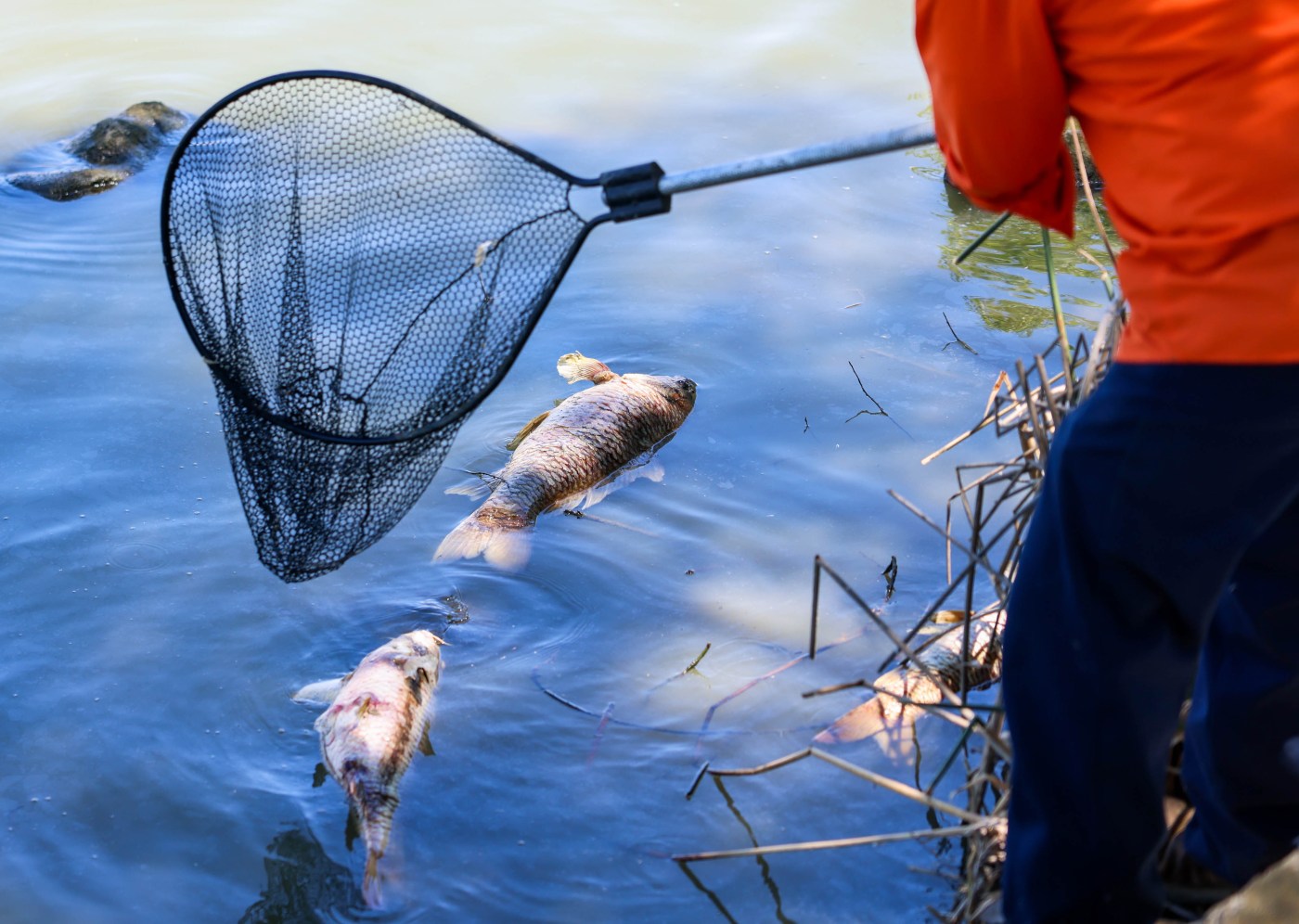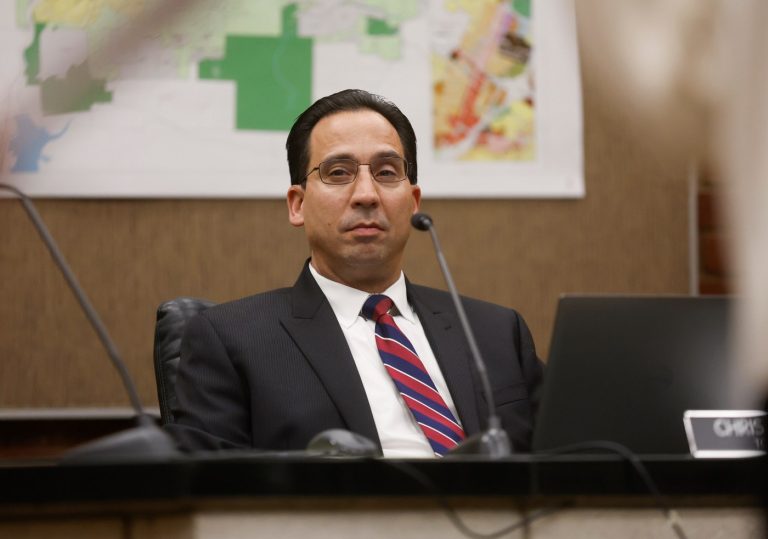FREMONT — In a scramble to clean up a large fish die-off last month, park rangers buried fish in a mass grave to mask the smell, a city administrator went “incognito” to dodge reporters, and employees were rushed in to work overtime over a holiday weekend, new records show.
The documents, obtained by this news organization through a public records request, paint a clearer picture of what happened in the days after a Bay Area heatwave killed about 1,000 fish in Fremont’s Lake Elizabeth. Rising water temperatures and leached oxygen from the manmade lake suffocated the fish between July 3 and July 6.
It left an estimated five-ton fish mess on the city’s hands and forced staffers to scramble for a response.
The city tapped several of its contractors to try to get out news about what was happening, but the fish were dying faster than the city could keep manage. Because of the Fourth of July holiday, most city workers and contractors were off the clock, exacerbating the city’s struggle to organize a die-off action plan.
According to text messages, the city was first made aware of the problem on the morning of July 3. Park Ranger Jeremy Saito asked city administrators for a “supplemental freshwater fill” for the lake, referring to the city’s freshwater pumps that regulate water levels in the five-feet deep lake. The lake at its shallowest is less than two feet deep.
“To control the smell,” rangers then dug a 6- to 7-foot hole as a makeshift grave to bury 60 fish, records show.
According to the documents, a Fremont city administrator spearheading the effort was growing tired of talking to the press about the situation. So, during a lake inspection, she wore street clothes, she texted to park rangers.
“FYI, I am in incognito not wearing city stuff,” Community Services Director Kim Beranek texted. “I don’t want media to know who I am. I have talked to them enough.”
Workers were seen through the Fourth of July weekend tossing dead fish out of the water and into dozens of green compost bins destined for a landfill. According to email correspondence from Environmental Services Manager Kathy Cote, by July 5, the city parks department was “overwhelmed dealing with dead fish.”
July 6 was an all-hands-on-deck effort, with more than two dozen city employees working overtime to get rid of the remaining fish bodies. The city spent about $10,676 in overtime to clean up the fish die-off – $9,274 for a combined 153 hours involving 14 maintenance and 16 park employees. One park ranger worked 17 hours of overtime, earning roughly $1,402, records show.
Each dead fish weighed between one to 15 pounds, and records show workers possibly handled 5 tons of fish, or about 10,000 pounds.
The city contracted with Applied Marine Sciences in Livermore to test and analyze water samples throughout the die-off, totaling $5,988 for their services. Additionally, the city needed nets to scoop out all the fish — which they bought from Marine West and Big 5 stores, totaling about $409. Republic Services, Fremont’s waste collection contractor, handled the fish dumping for $439.
With “pizza and drinks” for workers on July 6 costing $178, the city’s entire tab reached about $17,690.
Although “harmful algae blooms” were suspected, the city reaffirmed in an Aug. 2 news release that they were not a contributing factor.
The manmade lake is mainly used for flood control during rainy seasons, and is not meant for swimming. It was built on a natural wetland and intersects Stivers Lagoon, a currently dried-up wetland. The county has roughly $2 million earmarked for restoring the land.
Alameda County Flood Control District Director Daniel Woldesenbet said in an interview the county hopes to begin the rewetting of Stivers Lagoon within a year, but that the $2 million is just barely enough to get started. He said the project could cost up to $10 million.
“We are trying to restore back the lake how it was,” Woldesenbet said. “We are right now at the very early stages of doing hydrology analysis to see what we can do at Stivers Lagoon.”
But this is just the beginning of the ecological repair of Lake Elizabeth.
Related Articles
Air Quality advisory effective through Sunday
Letters: Narrow view | Clean cities | Trump’s deceit | Biden’s politicking | Denouncing reform
Forest Service orders Arrowhead-brand water bottler to cease operating in California Mountains
Five tips to help keep your utility bill somewhat manageable this summer
Opinion: We need a new Smokey Bear that embraces good fire
The city annually stocks a few hundred pounds each of catfish and trout for a yearly fishing event. But records show administrators are halting any new restocking in the aftermath of the die-off.
The dead fish found in the lake include catfish, trout, carp, crappie and Sacramento Suckerfish. The latter three were introduced into the ecosystem without the city’s consent, perhaps illegally. They also accounted for the majority of the dead fish over the July 4 weekend, the city said.
Records show the city delivered 500 pounds of catfish to the lake last year, and 600 pounds of rainbow trout on April 6. An additional 500 pounds of catfish were later added in the lake, accounting for at least 1,600 pounds of new fish in the lake since last year.
Environmentalist Joyce Blueford lambasted the city for what she calls decades-long “negligence” of the lake, which she argued should have its own dedicated scientist. Just as it did over 20 years ago, the lake has silted, and the bottom is caked with sediment, she said. It previously cost the city and county millions to dredge it.
“I felt like 20 years ago, I did this same spiel. And 10 years ago I did this,” Blueford told city officials. “You guys are not listening. It’s going to take a long time to fix this.”












